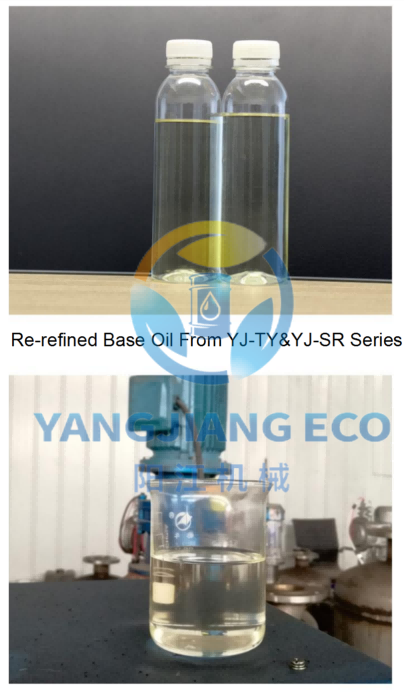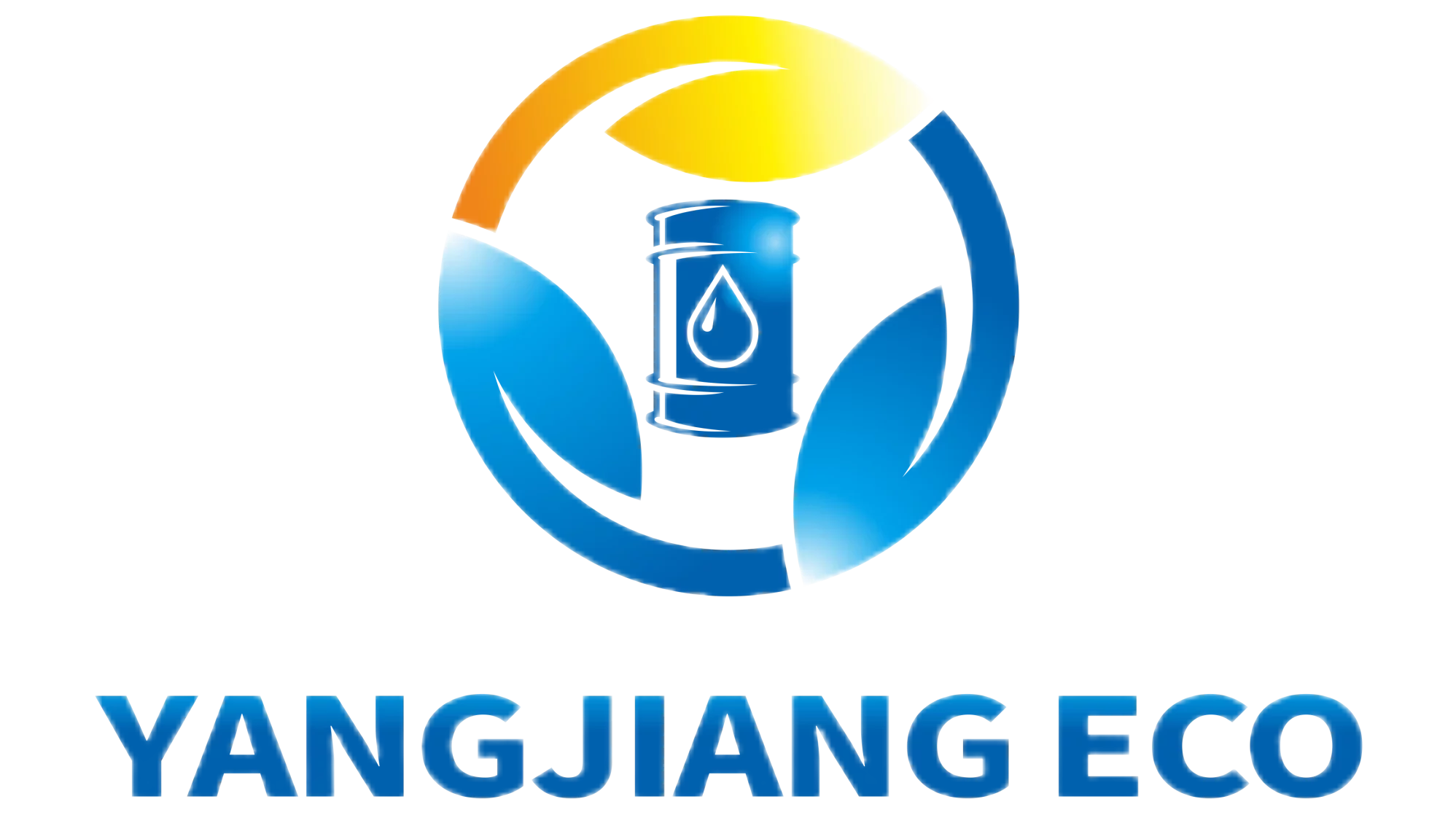YJ-SR Waste Engine Oil to Group II Base Oil Refinery
Deeply purify and refine all distilled oil, and improve the oil standard close to API Group II
- Solvent loss: 0.5%-1%
- Solvent-refined oil color standard: 1
- Recovery rate: 98-99%
- Solvent-refined oil sulfur: 50-100ppm
Liquid-Liquid centrifugal extractor in the machine can separate two different immiscible liquids, it has been used widely in industries such as the oil extraction, pharmaceutical, fine chemical, food products, Environmental protection industry and wastewater treatment, etc.
Why We Develop YJ-SR Waste Engine Oil to Group II Base Oil Refinery?
With the higher and higher requirement on base oil quality of downstream petrochemical enterprises, especially the base oil blending factories, with some old-fashioned technology, the recycled base oil quality is hard to meet the requirements of the downstream user. Before the expensive and technologically complex hydrogenation technology is widely used in oil recycling factory, there are many re-refining technologies, such as fuming sulphuric acid refining technology, lewis acid refining technology, this technology is better than the old fashioned technology, but there’s still a big gap from hydrogenation technology, the environmental pollution problem, the acid sludge, waste white clay disposal are big problems. So, we produced YJ-SR waste engine oil to group II base oil refinery to solve this problem.

Wide Applicantion of YJ-SR Waste Engine Oil to Group II Base Oil Refinery
- Base oil (distillate,like our YJ-TY series, base oil after the acid process);
- Diesel (cracking diesel from waste oil);
- Black diesel;
- Vacuum cut distillate oil;
- Acid-treated oil/Acid refined oil;
- Lube-cutOther waste mineral oil which doesn’t contain solid particle and water.
Through YJ-SR waste engine oil to group II base oil refinery, the purity and quality of base oil can be improved,close to the standard requirements of API Group II base oil classification with water white color, increasing the viscosity index of base oil, reducing sulfur content, increasing saturation, and removing impurities.
How the Solvent React With the Oil?
The solvent and oil are two immiscible solutions, both two immiscible solutions of different densities are pumped into the extractor through two entrances respectively, and then rapidly mixed in the gap between the drum and the shell, and the mixed liquid enters the drum through the inlet at the bottom of the drum, and the accelerated heavy phase is thrown to the lateral side of the drum. the light phase remains on the inside of the heavy phase, the two-phase interface is between the light phase outlet and the heavy phase underflow channel, and the heavy phase underflow channel is in the upper part of the separation zone composed of heavy phase enthalpy.
There is a five-stage separator, the oil and solvent were separated two-layer due to the different densities after heating and reacting, the up layer is oil, and the bottom layer is solvent. five times, the oil becomes to water-white color.
Working Principle of Waste Engine Oil to Group II Base Oil Refinery
Liquid-Liquid centrifugal extractor in the machine can separate two different immiscible liquids, it has been used widely in industries such as the oil extraction, pharmaceutical, fine chemical, food products, Environmental protection industry and wastewater treatment, etc. Our company can design and adjust centrifugal speed or inlet quantity of the centrifugal extractor according to the density of the different liquid mediums.
Advantage of Waste Engine Oil to Group II Base Oil Refinery
- Excellent Performance and Efficiency: The upper suspension structure with flexibility is better than rigid structures in performance and possesses the properties of self-alignment, high speed, high aspect ratio, high extraction efficiency, and excellent separation effect. It is energy-efficient, has low power consumption, and easy to operate and maintain, and has low installation space demand.
- High Flexibility: The design indicates high flexibility. Compared with traditional van and tower extractor equipment, it indicates brief residence time, rapid phase separation, and flexible flow ratios adjusting scopes. It is able to treat liquids of diverse viscosities and densities by adjusting weir plates and frequency conversion speed.
- Cost-Effectiveness and Safety: In addition, it is cost-effective due to having a small inner volume and low solvent consumption. The equipment also has excellent airtight features and meets GMP requirements, thus being appropriate in applications such as explosion-proof, toxic, harmful, and volatile media.
Parameter—Base Oil Index
The base oil is treated by YJ-TY&YJ-SR base on used diesel engine oil:
| NO | Item | Unit | Light base oil | Medium/heavy base oil |
| 1 | Viscosity(40℃) | mm2/s | 16~32 | 28~72 |
| 2 | Viscosity index | ≥99 | >110 | |
| 3 | Color index | ≤0.3 | ≤0.5 | |
| 4 | Pour point | ℃ | -15 | -10 |
| 5 | Flash point(open) | ℃ | ≥180 | ≥200 |
| 6 | Ash content | %(W/W) | 0.002 | 0.004 |
| 7 | Carbon residue | %(W/W) | ≤0.05 | ≤0.08 |
| 8 | Saturated hydrocarbon | % | 96 | 98 |
| 9 | Acidity | mgKOH/g | ≤0.01 | ≤0.01 |
Note: The waste oil composition will affect parameter index.

Yangjiang has been committed to solving various waste oil purification problems,in addition to the above waste oil recycling plants, we also provide other used oil re-refining plants, such as Used Oil to Base Oil Plant, Waste Oil to Diesel Oil Distillation Plant, Diesel Desulfurization Machine, Base Oil Blending Plant, and Transformer Oil Regeneration Machine.
FAQ
For more information, please contact Kayla, Tel/Whatsapp/wechat:+86 133 9980 7550







